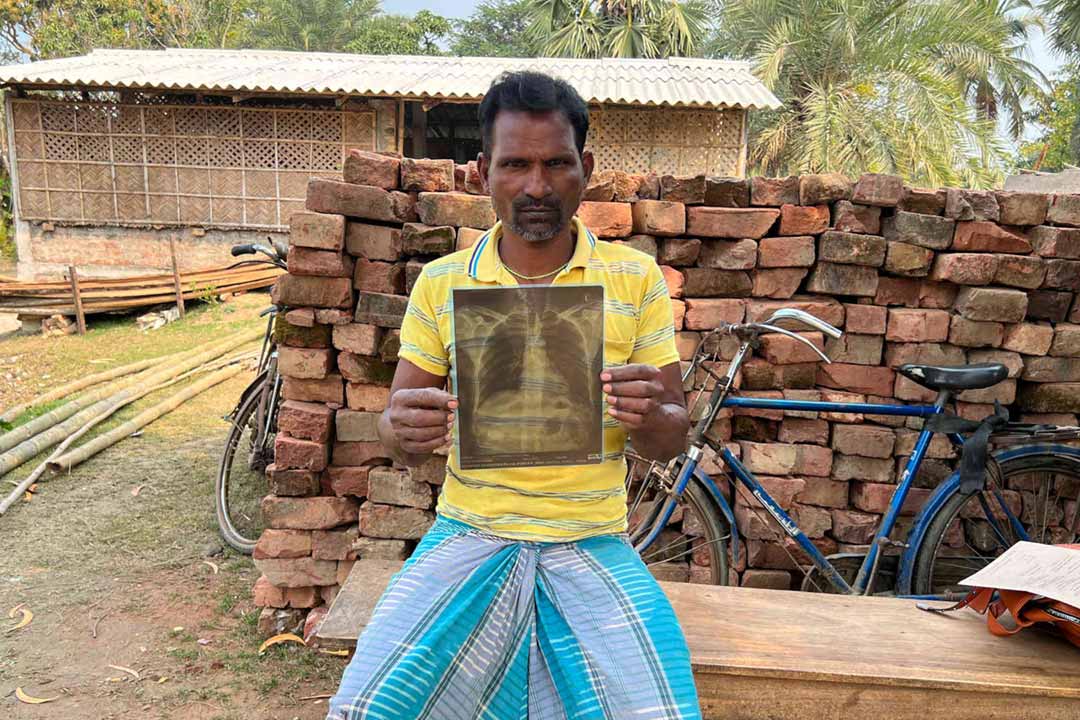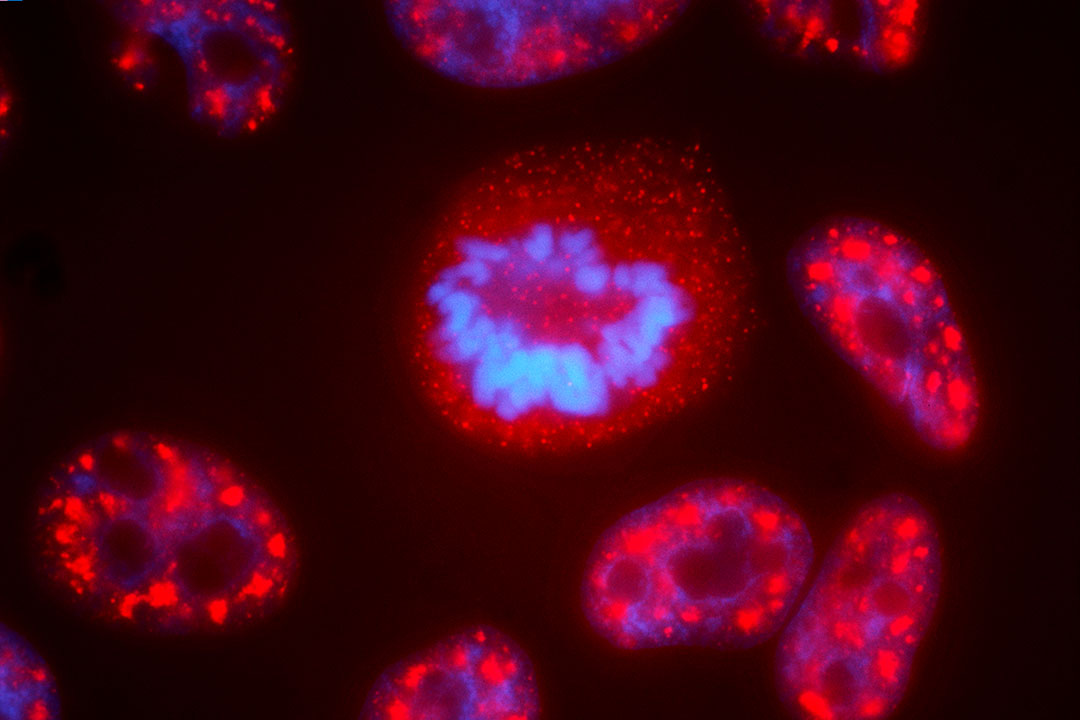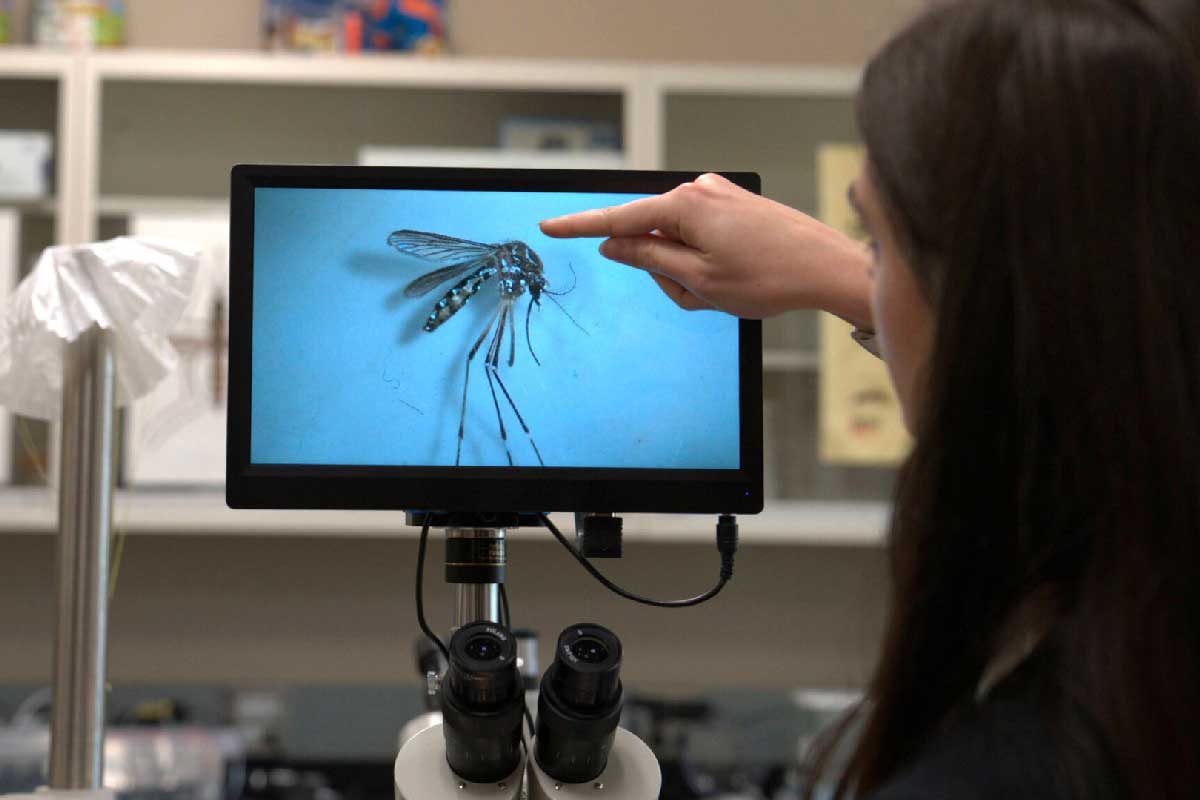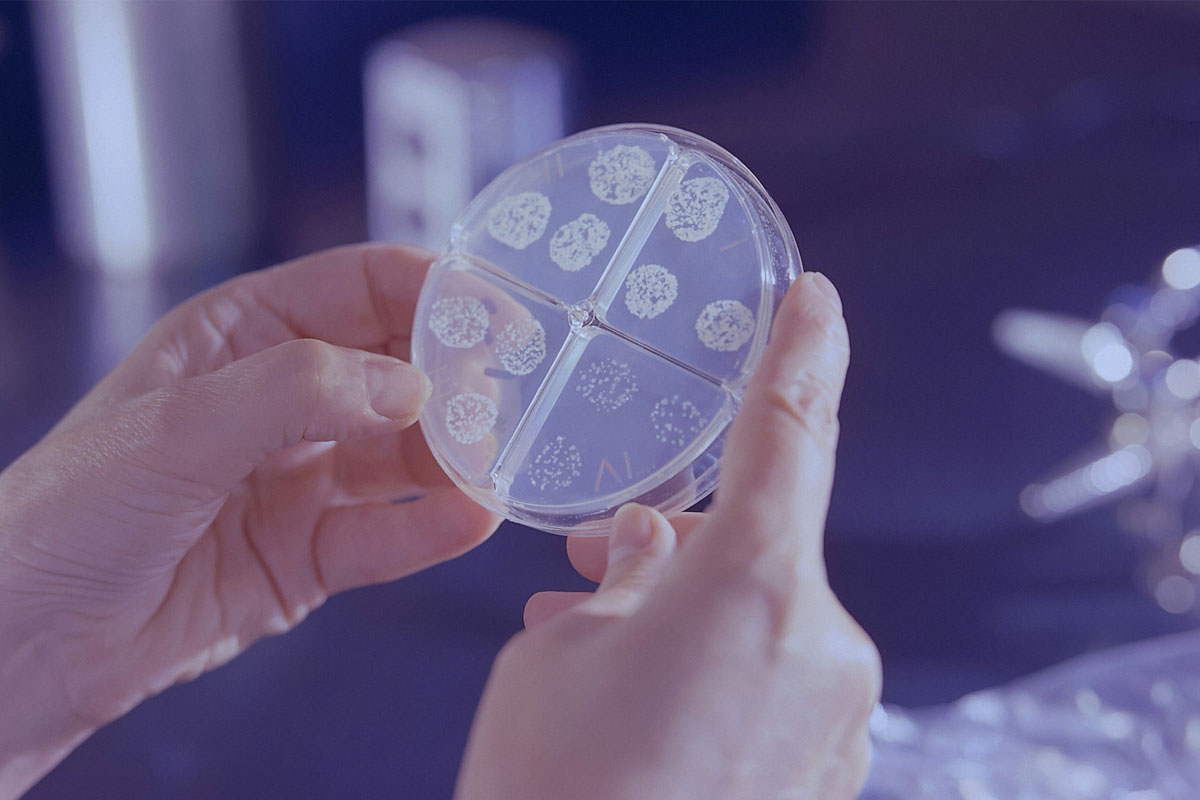
Bazlur Rahman Gazi could not see 6 feet ahead of him inside the mineral factory in West Bengal, India. A cloud of dust blurred his vision, and the thin, coarse cotton fabric tied around his mouth and nose made it difficult to breathe as he loaded large stones onto a moving belt that fed into a machine that crushes and grades the stones, which are primarily quartz, producing crystalline silicon dioxide, or silica. The makeshift mask made little difference, however. The damage to his health from inhaling the fine dust created by the intense industrial process was already done.
By the time he decided to leave his job in the early 2010s, Gazi had been exposed to crystalline silica dust every day for about five years. Several other workers, including the contractor who recruited people to the job, Bankim Mondal, quit as well. "When healthy young men died, we immediately left the factories and came home," Mondal said in a recent interview.
The silica produced in the factory in Jamuria, a neighborhood in the city of Asansol, was likely to be made into fire bricks that line furnaces at steelmaking factories in India. Gazi was recruited to work in the factory around 2006, along with other poor residents of southern West Bengal.
But in 2011, Gazi noticed that workers were dying at an alarming rate. "We only noticed something was wrong when workers started losing fat and looking like they only had skin and bones," he said. "There were times when two to three workers started dying every day."
"Still," he added, "some workers worked for more than a year even after they noticed workers died, and that's because they had no idea that the illness started in the factory itself."
Gazi and a few workers visited a local doctor, who informed them they were suffering from silicosis, a chronic lung disease. News spread quickly, and the frightened workers returned to their homes in droves. "The factory still owes us lots of money, but we didn't care anymore," said Bharat Mondal. After all, another worker pointed out, what good would money be to a dead body?
"Some workers worked for more than a year even after they noticed workers died, and that's because they had no idea that the illness started in the factory itself."
Today Gazi works odd jobs as a manual laborer near his village about 150 miles from Jamuria, where he returned after leaving the factory, but he cannot work too long or lift heavy objects because of his weakened lung capacity.
By one estimate, Gazi is one of 11.5 million workerswho are exposed to silica dust in India's sprawling, largely unregulated industrial economy. The irreversible long-term lung disease is caused by inhaling crystalline silica dust. And though silicosis is especially prevalent among mining workers, laborers who work with silica in other industries, such as glass making and sandblasting, are also exposed to the dust.
Silicosis symptoms include persistent coughing, shortness of breath, chest tightness, and extreme fatigue. They typically develop after 10 to 20 years of exposure, though intense, prolonged interactions can result in symptoms after 5 to 10 years — and in some cases as quickly as just a few months.
In 2011, the National Human Rights Commission issued a report to the Indian Parliament stating that "the number of persons who die from silicosis in India is high," although the precise number remains unknown. "It has also been established that there is no medical treatment for silicosis," the report continued. Silicosis is "a disabling, irreversible, fatal disease and continues to progress even when contact with silica stops."
There is little or no monitoring of health conditions in West Bengal's factories, where workers are predominantly poor and lack official employment records.In addition, many afflicted workers can't get a certificate showing that they have silicosis, which they need to receive government compensation and adequate health care.
At the moment, the West Bengal government is helping silicosis patients primarily by organizing camps, offering free drugs, and raising awareness of the disease through leaflets and banners distributed in rural villages.
But new research led by Kamalesh Sarkar, the now-retired director of India's National Institute of Occupational Health, and other government scientists may lead to better diagnosis and treatment. In 2020, Sarkar and his colleagues discovered a biomarker in the blood that indicates lung damage. They went on to develop a screening kit that can detect the biomarker. Last year, the kit received approval from a branch of the Indian Ministry of Health.
The hope now is that if industries that generate a lot of silica dust are required to provide regular screenings, silicosis will be detected and diagnosed earlier, which will help ensure that workers receive compensation.
Perry Gottesfeld, executive director of Occupational Knowledge International, a nonprofit public health group that works to reduce environmental and industrial hazards in developing countries, cautioned against being overly optimistic about a screening kit that hasn't yet been put into widespread use.
The kit is currently being evaluated by a third-party committee appointed by government health officials. Dharmendra Singh, a scientist at the Indian Council of Medical Research's National JALMA Institute who is part of the evaluation committee and has provided training to laboratory workers on Sarkar's project, said in an interview this spring: "The first clinical trial of the screening kit was successful in detecting lung damage. Now we're waiting for the results of the second batch to come in. We are very positive that the third-party evaluation committee will submit its approval to the Drug Control General of India within the next six months or even before that."
Have you read?
SILICOSIS HAS AFFLICTED generations of low-income factory and mine workers in India, though statistics remain sketchy, as well as other countries, notably China and Brazil. In the United States, about 2.3 million people are currently exposed to silica in the workplace, mostly in the construction industry, according to the American Lung Association.
In West Bengal, "you have to understand that silicosis is a compensable disease," said Samit Kumar Carr, an advocate for silicosis patients and the secretary general of the Occupational Safety & Health Association of Jharkhand. (Carr and Singh both worked on the evaluation of the screening kit.) "A person is entitled to compensation from the state government if they can show through medical records that they have silicosis."
In 2022, the West Bengal government set up a program to help workers get their diagnosis certified and to compensate the families of silicosis patients with about $2,400 upon diagnosis and $4,800 upon death. Furthermore, the patient can receive around $48 per month to help pay for medical care and living expenses.
There is little or no monitoring of health conditions in West Bengal's factories, where workers are predominantly poor and lack official employment records.
But many workers are finding it difficult to get the right medical documentation, according to Carr and silicosis patients. The doctors don't give the reports directly to the patients, telling them instead that they will send their reports to the necessary departments, said Elem Gazi, another former worker at the factory in Jamuria who also suffers from silicosis. "We asked for the reports to create Xeroxes of them, but they refused" to turn them over, Gazi said.
Other victims complain that the free medicine in the clinics is too weak, and that home treatment is not compensated. "The medicines are of a low composition or of lower power than the ones that silicosis patients should need to survive," said the contractor Mondal, whose two sons died from silicosis after working in the Jamuria factory. "Like, say, a medicine that should be 500 milligrams for silicosis patients is provided by the government at 200 milligrams."
Sarkar, the public health physician, pointed out a diagnostic challenge: "The problem with silicosis is that when you catch the disease from a lung X-ray, it means the lungs have already been damaged quite a lot," he said. So his goal was to find a biomarker that could detect silicosis at an earlier stage.
He came across studies showing that rats contracted silicosis when researchers put silica gel directly into their lungs. Sarkar and his team investigated the biomarkers secreted in the bodies of the rats as a result of silicosis. "We studied this research extensively and came to the conclusion that the biomarker CC16 is a promising biomarker for detecting silicosis," he said, referring to a protein produced by the lungs that appears to have anti-inflammatory properties.
Sarkar and his team began exploring CC16 in humans, first conducting blood work on three sets of subjects: healthy people; people with silicosis, confirmed by a lung X-ray; and people exposed to silica dust, but with normal X-rays. "Normal subjects had a normal CC16 value, but patients exposed to silica dust had a lower CC16 value, and the value of CC16 in subjects with confirmed silicosis was substantially lower than normal," Sarkar said. "So we came to the hypothesis that the value of CC16 was inversely proportional to lung damage."
A second study ranked lung damage, determined from the sizes of "shadows" on lung X-rays, as mild, moderate, or severe. Of the 149 subjects in the study, 32 were healthy, eight had mild damage, 76 intermediate damage, and for 33, lung damage was severe. "When we studied the biomarker CC16, we noticed that the value gradually decreased as the level of lung damage increased."
In 2022, the International Commission of Occupational Health, headquartered in Italy, asked Sarkar to present his work. Gottesfeld was the co-chair of the commission committee on silica dust exposures and tuberculosis and presided at the webinar where Sarkar presented his research on the early detection methods for silicosis.
THE SCREENING KIT Sarkar and his team developed is a bit like a pregnancy or Covid-19 test: Here, though, a user places a drop of blood in a hole on the device, which separates key components of the blood and detects the biomarker CC16. Then the device displays one line if the patient is healthy and two to four lines if lung damage is present.
Sarkar and Carr both stressed that silicosis is linked to tuberculosis, a widespread disease in India, which accounts for 28 percent of global TB cases in 2021, according to the World Health Organization. "This kit is important not only for the control of silicosis but also for the control of tuberculosis," Sarkar maintains.
Though the kit tests only for the presence of lung damage, a patient can be diagnosed with silicosis if they have lung damage and a history of working in environments where they might have been exposed to silica dust. And those workers without silica exposure can then be checked for TB.
The major disadvantage of the kit is that it doesn't give a quantitative value of CC16, which would be helpful in treating silicosis. The company that has been contracted by the government to create the kits, Axiva Sichem Biotech, Delhi, told Sarkar that further development "would require a huge investment which currently they are not equipped to deal with," he said. Keeping the kit affordable and easy to use is important, too, Sarkar pointed out. "I needed to develop a kit that could be used by villagers or people with minimum training."
"The problem is that most people don't know about silicosis. Nobody cares because it affects only poor people."
The price of the screening kit will be set by the manufacturer, and will likely cost between around $1.20 to $2.40, according to Singh, the scientist who is part of the evaluation committee. "It is important to us that the kit be affordable to everyone," he said. "The majority of daily laborers will find it expensive," he added, "yet it is less expensive than receiving an official diagnosis from the hospital via chest X-ray." And Sarkar said that while he and his team would earn a share of the proceeds, the bulk of the money would go to the manufacturer.
Nayab Sultan, an occupational health and safety expert in Canada who consults with the Southern Africa Miners Association, which represents about 350,000 former miners and their dependents throughout southern Africa, said he first connected with Sarkar on LinkedIn after encountering his early research. Sultan was curious if early screening of silicosis had been developed into an inexpensive kit — which, he said, Sarkar told him was in development at that time. Sultan is now evaluating if the kit could be used in his work with SAMA.
While Sultan understands the kit's limitations, "even if it provides just a quick, cheap option of saying 'hey, this person needs attention,'" he said, "that's good enough for us because, at the moment, what we have to understand is some people can be asymptomatic."
As for the workers in West Bengal, "it will be good if a solution does come for people like us," said Bazlur Rahman Gazi. "The problem is that most people don't know about silicosis. Nobody cares because it affects only poor people."
UPDATE: A previous version of this piece incorrectly identified two factory workers as Bijali Rahaman and Elem Basokazi. The correct names are Bazlur Rahman Gazi and Elem Gazi. The piece also incorrectly referred to an initiative to assist silicosis patients and raise awareness about the condition as being conducted by the Indian government. The program is being run by the government of the state of West Bengal. The piece incorrectly stated that Samit Carr worked with Dharmendra Singh on evaluating a screening kit that can detect a biomarker that indicates lung damage. Carr and Singh were both part of the same study, but did not work together directly. Lastly, the piece included an incorrect assessment of the biomarker kit by an International Commission of Occupational Health committee at a meeting in 2022 where Kamalesh Sarkar presented his work. The committee reached no conclusions about the merits of the kit or the need for further research.
Written by
Agnee Ghosh is a journalist based in India covering gender, health, and the environment. Her writing has appeared in BBC Future, NPR, Vice, The New Humanitarian, and other outlets.
Website
This article was originally published on Undark on 16 August. Read the original article.










